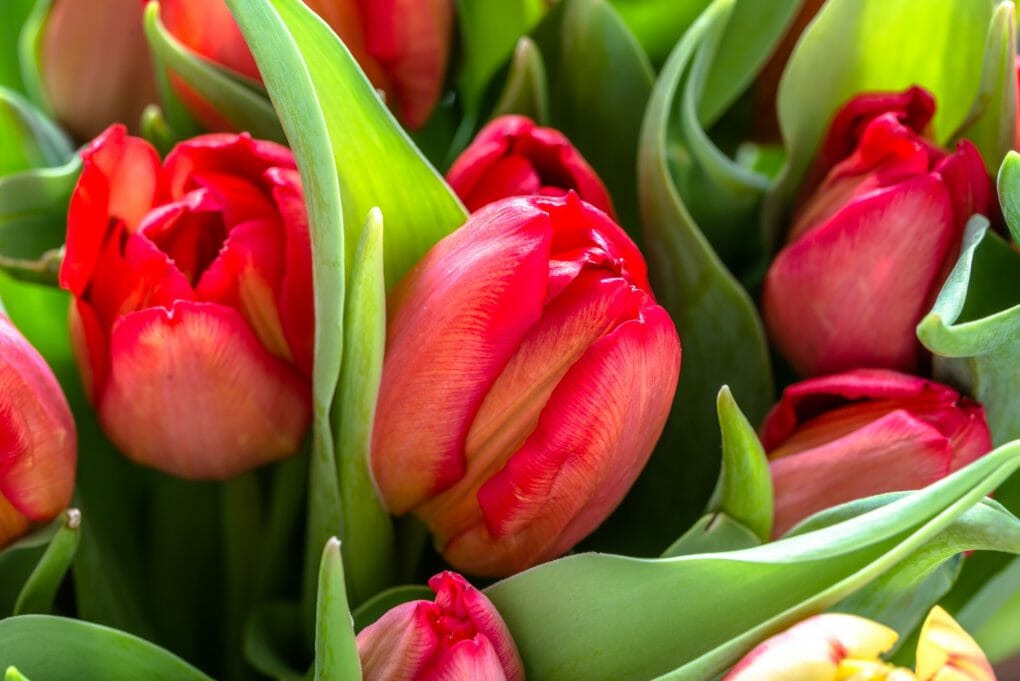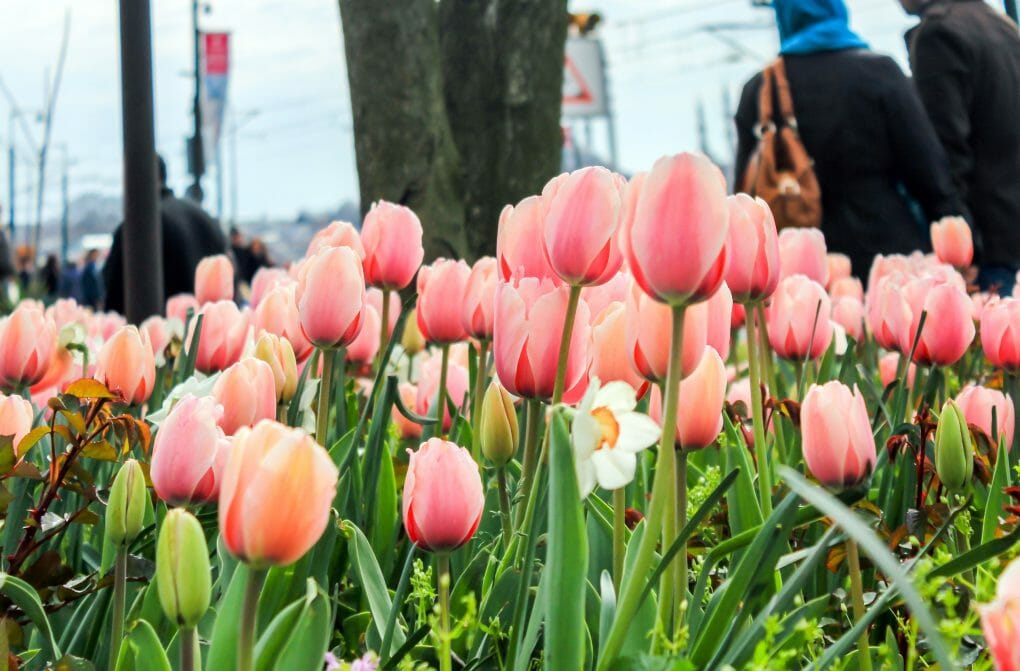How Deep Do You Plant Tulip Bulbs? Know What is the Right Planting Depth
It is highly suggested to create a hole triple as deep as the bulb’s height for planting bulbs. Plant them deeper to keep your bulbs from drying if your soil is sandy. If all of your bulbs can be put at the same depth, plant them in different holes or dig a trench. When planting bulbs, the key is to plant them only so they take too long to appear in the spring and not too shallowly so that they emerge prematurely and wither in the cold weather. Planting them correctly gives a more substantial possibility that they will flower when it is time.
Table of Contents
Tulip Planting Depth
There are varieties of tulips that are not targeted by pesky critters. You can plant them more as four to five inches or 10-12.5 cm deep. Regarding spacing, big bulbs with a diameter of 2 inches or 5 cm should be planted between 3 and 8 inches apart. One to three inches (2.5-7.5 cm) apart is the recommended spacing for planting little bulbs.

Medium-sized tulip species like Greig’s tulip, initially found in Turkestan, can be planted as six to eight or 20 cm inches deep.
The Dangers of Planting Tulips Too Deep or Too Shallow
- Planting too deep or too shallow tulips can harm their health, so following the proper planting guidelines is essential.
- If you put your bulbs in a shallow hole, you run the chance of squirrels or chipmunks finding them.
- Additionally, they can become more susceptible to abrupt thawing and freezing due to weather changes.
- They risk developing a weaker root system, impacting the blooms and the plant’s growth. However, if you bury bulbs too deeply, they might not bloom or be too late.
- Keep in mind the recommended spacing, as planting bulbs too near to one another may cause difficulties, such as the roots entwining and strangling one another, becoming malnourished, or starving from a lack of water. They may compete for light and soil nutrients, resulting in decreased flower production and smaller bulbs.
- When tulips are planted deeper than 12 inches, the bulbs can become subject to rot due to waterlogging and stagnation.
- When tulips are planted too shallow, they risk being trampled by lawnmowers or other equipment.
Planting Tulip Bulbs in Containers
To successfully plant tulip bulbs in containers, make sure to follow these simple guidelines:
- Put a plastic grower pot on its side at the bottom of each container to make it lighter and more straightforward to transfer. Any cheap, lightweight potting mix should fill the containers two-thirds full. Fertilizer is not necessary. Put the tulip bulbs in a tight circular configuration, disregarding conventional spacing recommendations. Put potting mix over the bulbs and plant them at the same depth as you would in the ground, which is often two to three times their height. Tulips grown in containers are less likely to be disturbed by animals than those put in the ground. Place a wire grid, such as a circular peony support, on top of the soil for additional protection, and then cover it with a thin coating of potting soil.
- Provide them with a protected area to spend the winter. Place the potted pots in an uncovered garage if you live in USDA Hardiness Zones 4 to 7. Because of this, they are shielded from a freeze-and-thaw cycle, which would otherwise transform planted bulbs into mush. You will only need to water them again in the spring, so water them when you put them in. You’ll need a different plan to keep the containers cold, dry, and insulated if you don’t have an unheated garage and live in an area with freezing weather. The planted bulbs need to be kept just above freezing.
- Early in the spring, inspect your pots. Water them sparingly. Bring the tulips out and exhibit them once they emerge from the soil. The tulips will blossom simultaneously as those planted in the ground if you water them the same way any container plant would. All the restrictions surrounding inground planting still hold when you gently move the bulbs onto a sunny bed after the blossoms have faded. The best and bravest action is to compost the used bulbs and prepare a new color scheme for the upcoming season.
Planting Tulips in the Garden
Tulips are a beautiful addition to any garden but can be tricky to grow. Here are some tips on how to plant tulips in your garden:

- When choosing where to plant your tulip bulbs, select an area that is large enough for your desired size selection but also has good drainage so that wetness doesn’t accumulate at the base of the plants.
- Start by sketching out your tulip bed’s desired shape and size on paper or a map. Make sure that you account for enough sunlight and soil space.
- Choose the type of tulip you want to plant based on its color and characteristics (short-stalked vs. long-stalked, double vs. single flowers). Consider whether you need an annual or perennial flower.
- Just as tulip bulbs need good drainage, they also appreciate an open soil surface to grow in. When planting your tulip bulbs, loosen the soil around them with a fork or spade. Make a hole just large enough for the tulip bulb, and then tightly pack the surrounding soil around it using your hand. Wait to water until new growth appears (usually after two weeks).
- Plant your bulbs at the right depth in well-drained soil, with plenty of moisture available all year round. Keep pruning foliage back as needed so that blooms appear aboveground only. Water regularly during dry weather periods.
Tulip Care
Sunlight
Tulips need full sun to bloom. In the North, tulip bulbs will likely grow best in a location that receives morning or late afternoon sun. If growing tulips in the South, mulch them heavily during the winter months to help keep them warm and protected from frost damage.
Watering
Water your tulip bulbs sparingly when planting; you’ll water them more frequently as they bloom. When flowering ends and new foliage appears, withhold watering until new growth begins (usually after two weeks). Ensure the soil is dry before withholding water from your bulb. When watering, mulch surrounding plants to keep them moisture-rich and discourage weed growth.
Fertilizing
Tulip bulbs will not require fertilization during the planting or flowering process but will fertilize after bulb bloom has ceased. Use a low-nitrogen fertilizer that is specifically formulated for bulbs and flower plants.
Storing Tulip Bulbs
Remove any dirt, outdated leaves, or roots from the bulbs with care. Any newly produced bulbs should be separated. The bulbs must be completely dry, or they will rot. Up to the time for replanting, ensure excellent air circulation, warmth, and darkness. For storage, many growers utilize trays or mesh bags.
